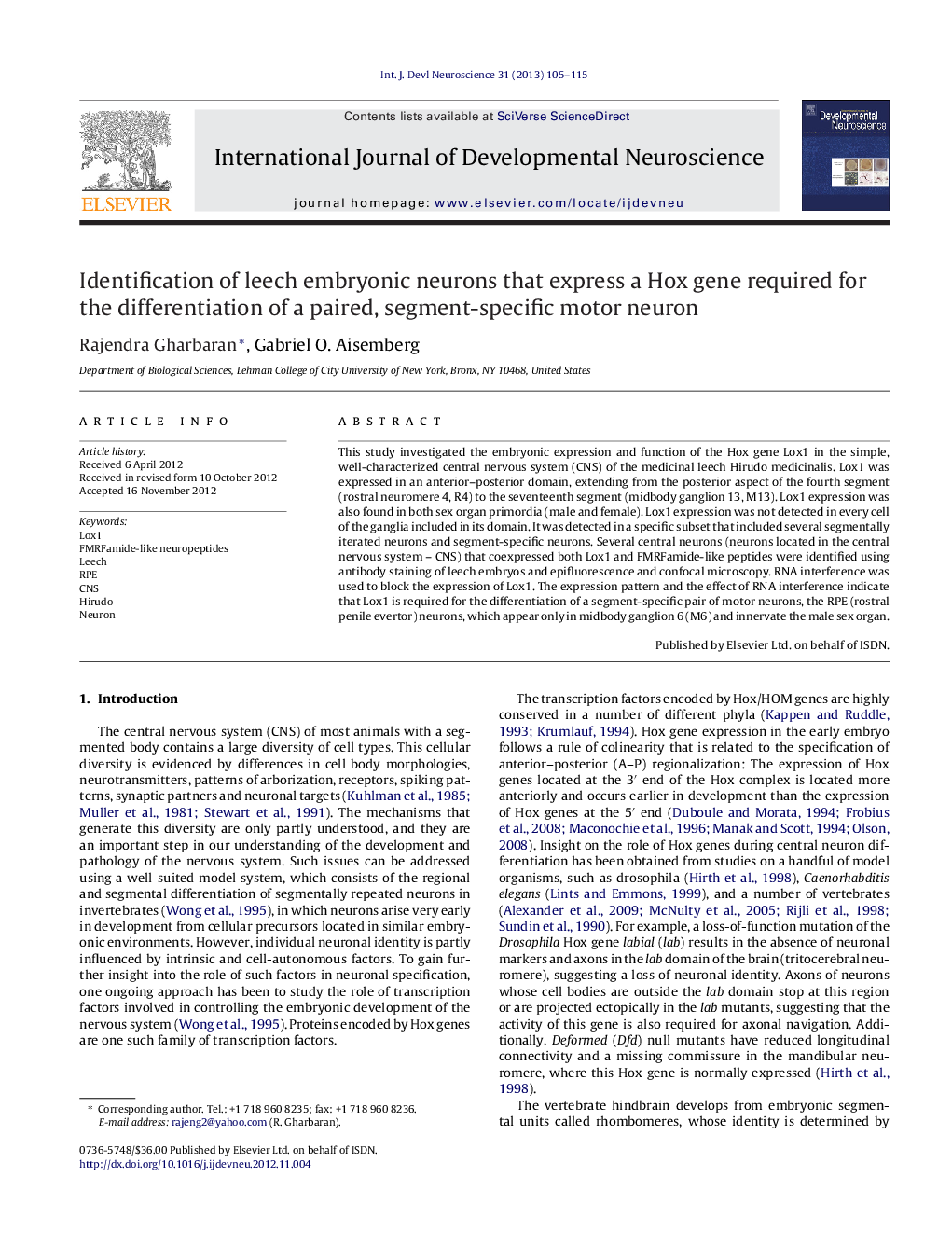| Article ID | Journal | Published Year | Pages | File Type |
|---|---|---|---|---|
| 2785928 | International Journal of Developmental Neuroscience | 2013 | 11 Pages |
This study investigated the embryonic expression and function of the Hox gene Lox1 in the simple, well-characterized central nervous system (CNS) of the medicinal leech Hirudo medicinalis. Lox1 was expressed in an anterior–posterior domain, extending from the posterior aspect of the fourth segment (rostral neuromere 4, R4) to the seventeenth segment (midbody ganglion 13, M13). Lox1 expression was also found in both sex organ primordia (male and female). Lox1 expression was not detected in every cell of the ganglia included in its domain. It was detected in a specific subset that included several segmentally iterated neurons and segment-specific neurons. Several central neurons (neurons located in the central nervous system – CNS) that coexpressed both Lox1 and FMRFamide-like peptides were identified using antibody staining of leech embryos and epifluorescence and confocal microscopy. RNA interference was used to block the expression of Lox1. The expression pattern and the effect of RNA interference indicate that Lox1 is required for the differentiation of a segment-specific pair of motor neurons, the RPE (rostral penile evertor) neurons, which appear only in midbody ganglion 6 (M6) and innervate the male sex organ.
► A new polyclonal antibody purified by an improved chromatography-affinity technique, showed Lox1 expression in segment-specific and segmentally iterated central neurons restricted to R4 to M13 during embryogenesis. ► Lox1 is expressed by segment specific and segmentally repeated central neurons that contain FMRFamide-like neuropeptide. ► RNAi study suggests that Lox1 plays a role in certain aspect of the differentiation of the paired specialized motor neuron, the rostral penile evertor (RPE) neuron.
